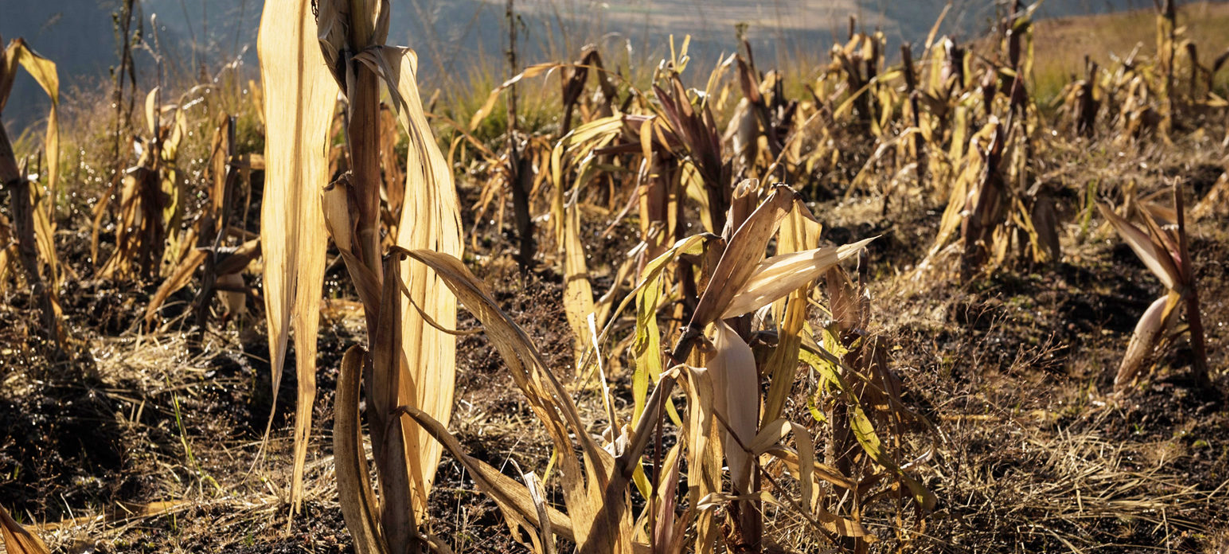![]()
OP-ED
As the world grapples with the growing threats of climate change, Lesotho finds itself on the frontlines of a crisis that is disrupting agriculture, depleting water resources, and threatening livelihoods. With unpredictable rainfall, prolonged droughts, and rising temperatures, it is clear that the impact of climate change is no longer a distant threat—it is here, and it is real.
Yet, amid these challenges, one critical document seems to have faded into the background: Lesotho’s National Climate Change Policy (2017-2027). This policy, designed to steer the country towards a climate-resilient and sustainable future, lays out concrete measures to mitigate and adapt to the devastating effects of climate change. But the question remains—how much of this policy has been effectively implemented?
A Policy That Promised Change
The National Climate Change Policy was introduced with the vision of creating a low-carbon, climate-resilient economy that safeguards the environment while promoting sustainable development.
The policy itself acknowledges Lesotho’s high vulnerability to climate change, stating; “Water resources have greatly diminished (perennial springs, robust rivers, and many dams). Farming, a major source of living in rural areas, is in steady decline. In addition, soil loss and land degradation have accelerated.”
These words were written in 2017, yet the situation has only worsened. We continue to witness drying rivers, eroded farmlands, and worsening food insecurity, yet the policy that was meant to address these issues remains largely overlooked in national discussions.
What Was the Plan?
The policy set out several key objectives to tackle climate change, including:
- Strengthening climate-smart agriculture to ensure food security.
- Investing in renewable energy to reduce dependence on fossil fuels.
- Improving water conservation through better management and infrastructure.
- Enhancing disaster preparedness with early warning systems.
- Reducing greenhouse gas emissions while promoting low-carbon development.
These objectives are not just ambitious statements; they are practical solutions to Lesotho’s growing climate crisis. But as we move closer to 2027, the end of the policy’s timeline, how much progress has really been made?
The Reality on the Ground
While Lesotho has taken some steps towards addressing climate change, implementation has been slow and inconsistent. Consider the following:
Agriculture: Despite plans to promote climate-smart farming, many farmers still rely on traditional methods that are failing in the face of droughts and erratic rainfall.
Water Management: The country’s water resources continue to decline at an alarming rate, with some regions experiencing severe shortages. The policy proposed rainwater harvesting and water reuse systems, but widespread adoption remains limited.
Renewable Energy: While Lesotho has great potential for wind and solar power, investment in these areas has been minimal. Many rural communities still rely on wood and fossil fuels for energy.
Disaster Preparedness: Early warning systems for floods and droughts exist on paper, but in practice, many communities receive little to no timely information when disasters strike.
The lack of funding and weak policy enforcement have slowed progress, leaving the country vulnerable to climate-related disasters.
The Forgotten Crisis: Land Degradation and Soil Erosion
One of Lesotho’s biggest environmental threats is soil erosion, yet this issue remains largely underreported. The policy explicitly highlights:
“Lesotho loses an estimated 40 million tons of soil per year through erosion, significantly affecting agricultural productivity and food security.”
Despite this staggering statistic, efforts to combat land degradation are nowhere near sufficient. Sustainable land management techniques, such as reforestation and controlled grazing, have been implemented in only a handful of communities, leaving vast areas of land exposed and vulnerable.
The Role of Climate Finance: Where Is the Money?
The policy acknowledges that tackling climate change requires substantial funding. It proposed leveraging international climate funds and forming public-private partnerships (PPPs) to secure financial support. Yet, Lesotho’s access to global climate finance remains weak, and domestic funding for climate initiatives is stagnant.
The government has received funding pledges from international bodies, but much of this support has yet to translate into visible change on the ground.
A Call to Action: The Policy Must Be Revived
The National Climate Change Policy was a bold step in the right direction, but a policy is only as strong as its implementation. As climate disasters become more frequent and severe, there is an urgent need to revive and enforce the commitments made in 2017.
The government must:
- Prioritise climate change in the national budget to ensure proper funding for adaptation and mitigation efforts.
- Accelerate renewable energy investments to reduce dependence on fossil fuels and combat deforestation.
- Expand climate-smart agriculture programs to help farmers adapt to changing weather patterns.
- Strengthen disaster preparedness systems to protect communities from floods, droughts, and extreme weather events.
- Hold policymakers accountable for ensuring that the policy does not remain just another document collecting dust.
A Policy That Cannot Be Ignored
Lesotho cannot afford to delay action on climate change any longer. The National Climate Change Policy was created as a blueprint for resilience, yet its impact remains limited due to slow implementation and weak enforcement.
With 2027 approaching, now is the time to reassess, reinvest, and reignite the fight against climate change. If we fail to act now, the consequences will be far more costly—for our environment, our economy, and future generations.
The policy exists. The solutions are known. The time to act is now.




